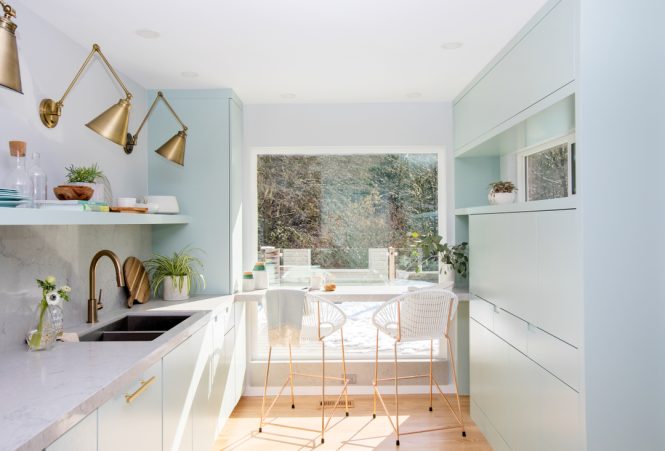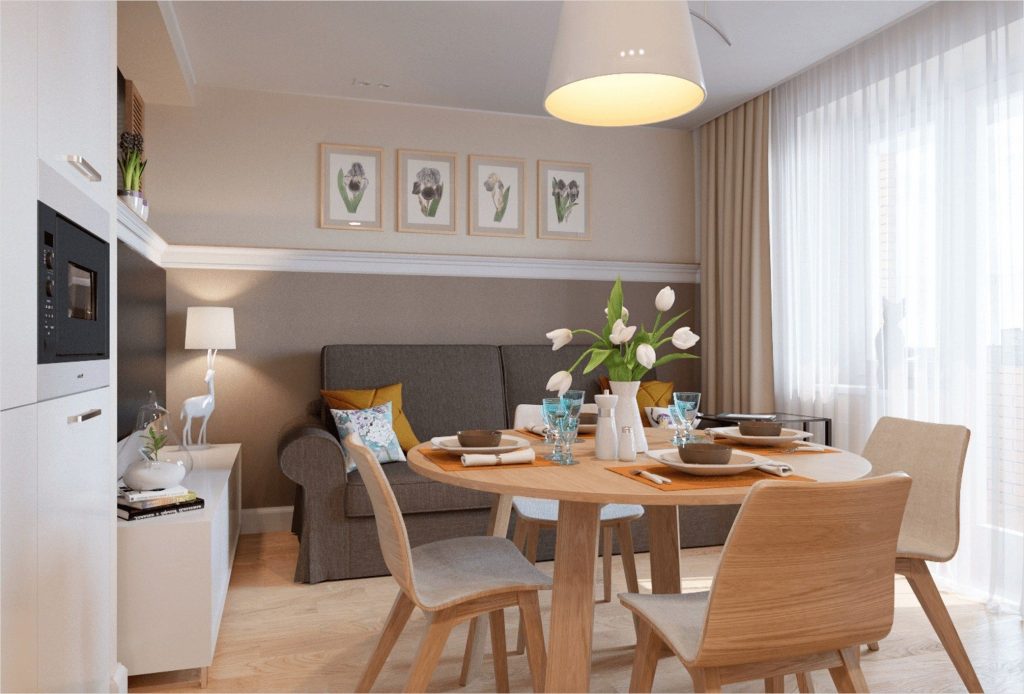

Interior Design for Small Spaces is a crucial skill in today’s world, where many individuals and families find themselves living in compact areas. Imagine turning a tiny apartment into a home that feels spacious and inviting, or making a small living room feel both cozy and expansive. The key lies in strategic design choices and a creative approach to space optimization. Many face challenges in efficiently utilizing limited square footage, optimizing storage, and creating a visually appealing space. This article offers practical solutions for maximizing small spaces, including innovative storage solutions, clever layout ideas, and effective color palettes. This comprehensive guide will walk you through the critical steps of designing stylish and functional interior spaces within confined areas, providing valuable strategies from understanding space planning to implementing design ideas.
Space Planning and Layout Optimization
Understanding the Fundamentals of Small Space Design
In interior design for small spaces, optimizing space planning is paramount. The right layout significantly impacts the overall feel of a room. By understanding the flow and functionality of the space, you can maximize its potential. A well-designed layout maximizes natural light and creates visual spaciousness. Proper zoning, determining areas for specific activities, can significantly enhance a space’s efficiency. Think strategically about how people will move through the space and whether the furniture arrangement creates an obstruction or promotes seamless movement. Consider the functionality and purpose of each room while ensuring a cohesive flow.
Lighting Strategies for Visual Spaciousness
The Power of Natural Light
Strategic lighting is a crucial element in small space design, affecting the perception of space. Natural light is your best friend in small spaces, brightening and enlarging the room. Maximizing natural light is key; choose sheer curtains or blinds to allow the sun’s warmth and light to filter through. Mirrors can double the amount of light in a room, reflecting natural light and creating an illusion of spaciousness. Placing mirrors strategically, opposite windows or across the room, dramatically improves the sense of openness. Using strategically placed mirrors also works well to visually expand the space.
The Psychology of Color and Texture in Small Spaces
Creating a Spacious Feel Through Color and Pattern
Color palettes play a significant role in interior design for small spaces. Light and neutral colors reflect light, making the space appear larger and more airy. Avoid dark or bold colors that can make a small room feel smaller and cramped. Light pastels or soft neutral tones are often recommended. Adding texture to the walls can also impact perception. A well-chosen rug can ground a room, while a patterned wall covering or textured fabric can add visual interest without overwhelming the space.
Utilizing Multifunctional Furniture
Clever Solutions for Limited Space
Clever use of multifunctional furniture is essential in small space design. Furniture that serves multiple purposes, like ottomans with storage or beds with built-in drawers, is invaluable. These pieces optimize storage and create a flexible living space without sacrificing style or comfort. Consider foldable furniture; this is particularly useful in apartments or small homes. This can maximize floor space by easily storing furniture when not in use.
Incorporating Clever Storage Solutions
Maximizing Space for Storage
Storage solutions are integral to small space design. Think vertically! Install tall bookshelves, wall-mounted cabinets, or use under-bed storage to maximize storage without taking up valuable floor space. Utilizing vertical space is a simple way to add a lot of storage to your home or apartment. Built-in storage options can enhance the room’s overall design while providing practical storage solutions. Clear and organized storage keeps a space feeling tidy and inviting.
Strategic Use of Textiles
Enhancing the Atmosphere with Textiles
Incorporating textiles such as rugs and curtains can dramatically change the mood and feel of a small room. Choosing the right textiles can add warmth and visual interest without overwhelming the space. Consider using patterned rugs to define spaces or introduce pops of color and texture. Curtains and drapes can also create visual separation, helping to define different zones within the area. The right textiles can create a cohesive and visually appealing environment.
Incorporating Greenery
The Impact of Plants in Small Spaces
Adding greenery is an excellent way to introduce natural elements into your design. Plants not only improve the aesthetic appeal of a room but also contribute to a healthier and more vibrant atmosphere. Choose plants that are suitable for your space and lifestyle, and consider grouping them together for a visually appealing impact.
Creative Storage Solutions
Multipurpose Storage for Efficiency
Clever use of storage is an integral aspect of interior design for small spaces. Utilize wall-mounted storage, vertical shelving units, and under-bed storage solutions to maximize storage capacity without compromising functionality.
Maximizing Natural Light and Ventilation
Enlarging the Space through Design
Maximizing natural light is vital in small space design. Incorporate sheer curtains or blinds to let sunlight flow freely and improve your space’s ambiance. Good ventilation can also add to the feel of a larger and more airy space.
Frequently Asked Questions
Q: What are some budget-friendly ways to improve the design of a small space?
A: Budget-friendly solutions can include repainting walls with light colors to create the illusion of spaciousness, incorporating mirrors to reflect light and expand the room visually, and strategically arranging furniture to maximize space utilization. Upcycling furniture and using affordable yet stylish decorative pieces can also greatly improve the look of a small space while maintaining a budget-friendly approach. Seek inspiration from various online resources, including social media platforms, for ideas and tips on improving your small space without breaking the bank.
Q: How do you create a visually appealing space in a small apartment?
A: A visually appealing space in a small apartment involves thoughtful use of light, strategic furniture placement, and thoughtful color palettes. Using light and airy colors on walls and ceilings creates an illusion of spaciousness. Strategically placed mirrors can reflect light and make a room feel bigger. Ensure that furniture is functional and serves multiple purposes, maximizing storage and minimizing clutter. Incorporate houseplants or other greenery to introduce natural elements and life into the space. Pay close attention to lighting and create a bright and airy ambiance.
In conclusion, maximizing space in small apartments and homes demands strategic planning and innovative design choices. By embracing multifunctional furniture, strategic lighting, and thoughtful color palettes, you can transform a small space into a vibrant and functional living area. Don’t be intimidated by the limitations of your space; unleash your creativity with these interior design tips! Explore the wealth of resources available online and in your local community for further insights and inspiration. Consider consulting a professional interior designer if needed. Let these proven strategies and resources empower you to turn your small space into a comfortable, stylish, and inspiring home.